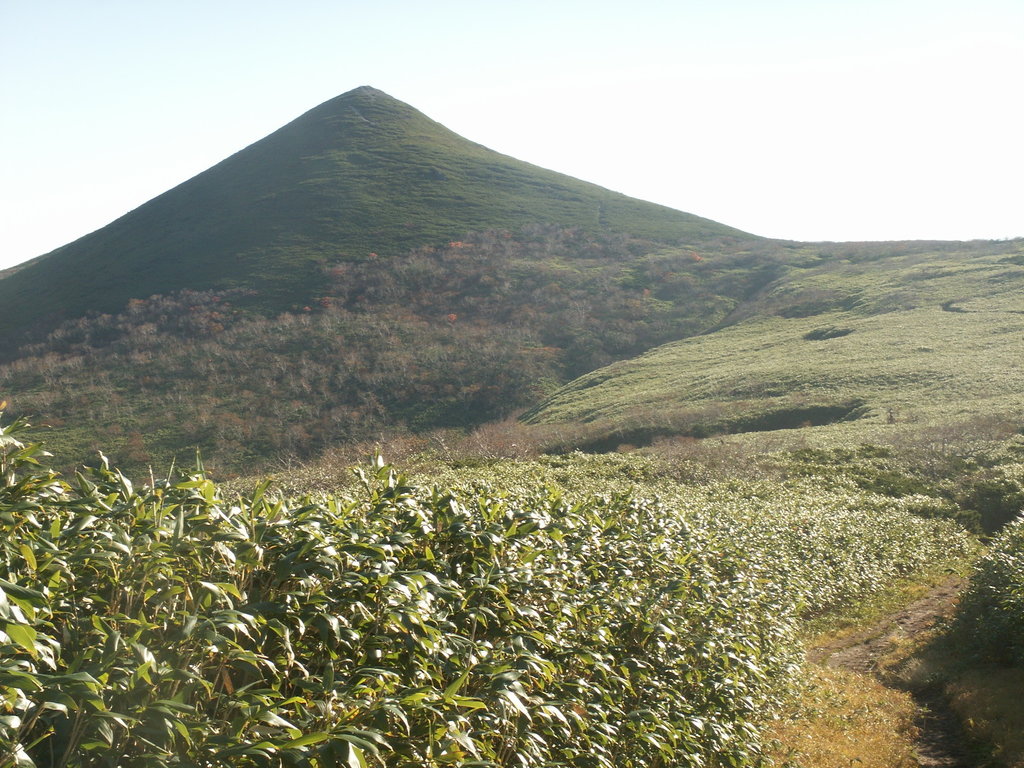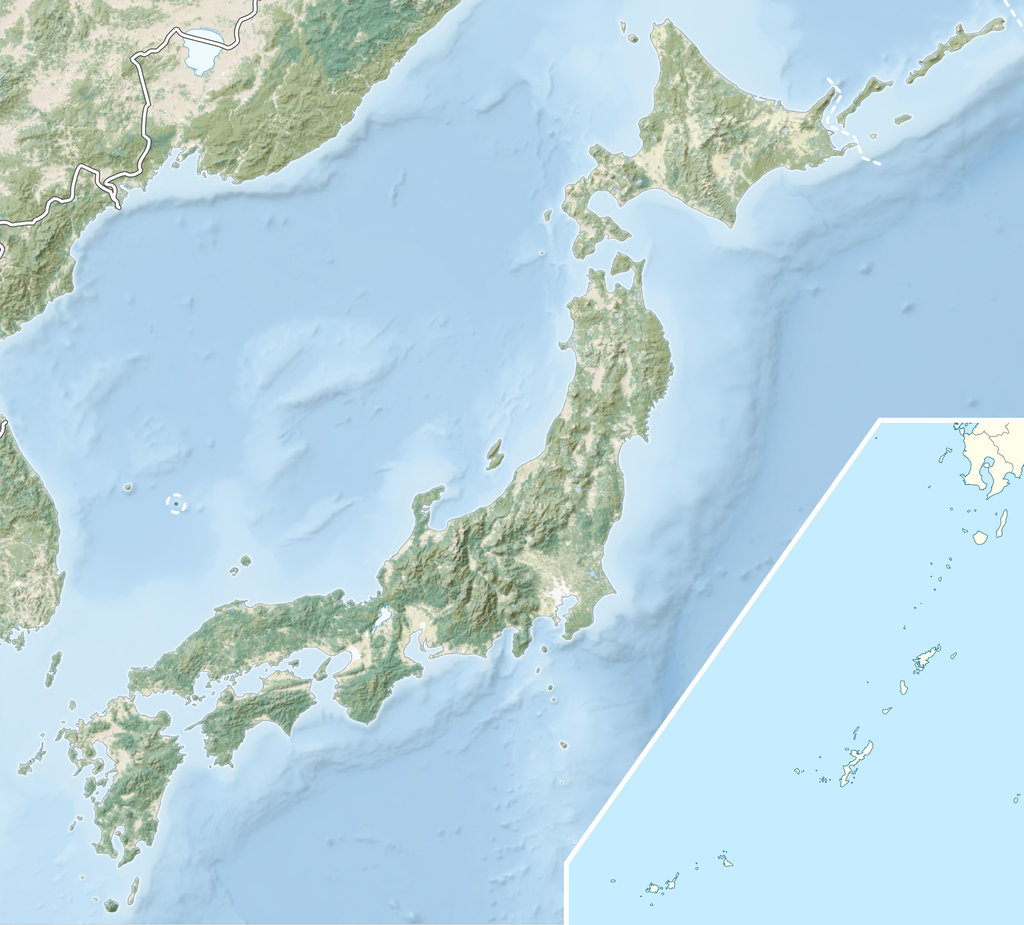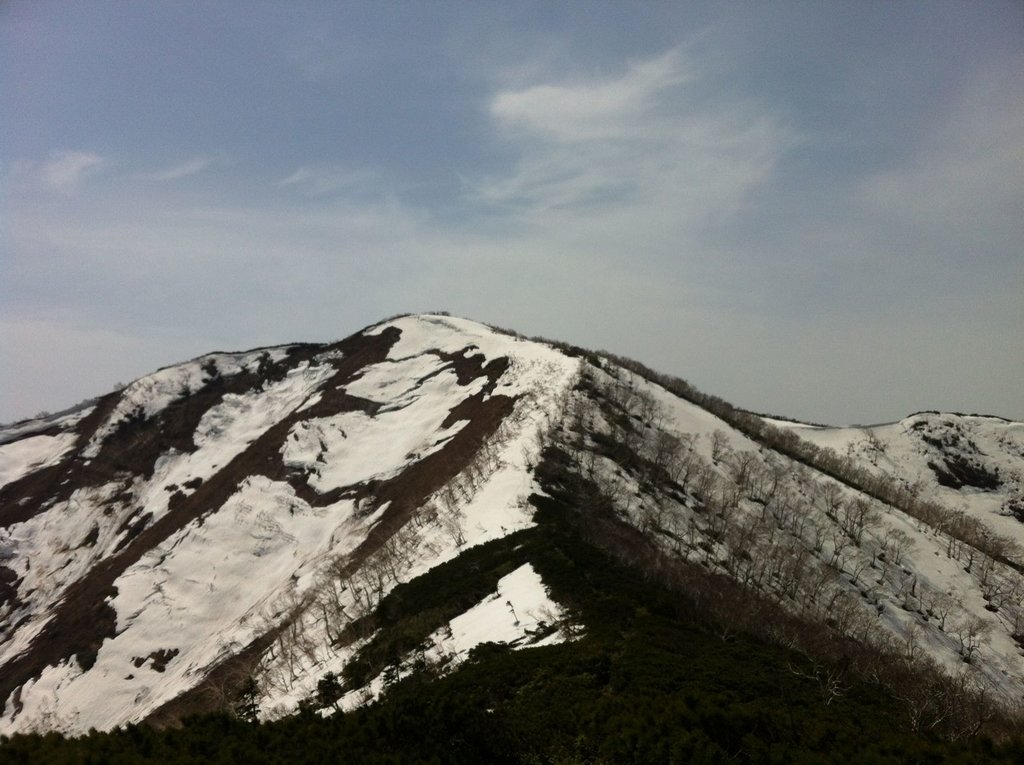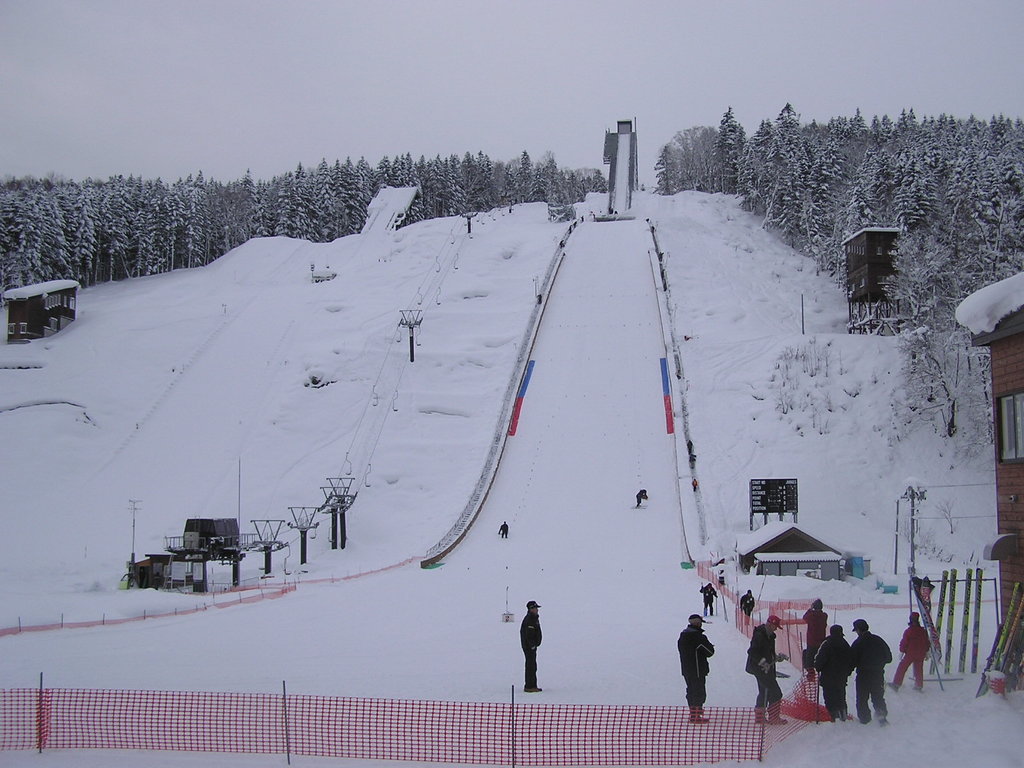Get PeakVisor App
Sign In
Search by GPS coordinates
- Latitude
- ° ' ''
- Longitude
- ° ' ''
- Units of Length

Yes
Cancel
Share ×

Scan the QR code and open PeakVisor on your phone
❤ Wishlist ×
Choose
Delete
There are 94 named mountains in Kitami Mountains. Teshio Dake (1,557m) is the highest point. The most prominent mountain is Hako Dake (1,130m).
The word ‘kitami’ 北見 is composed by the characters of ‘north’ 北 and ‘to see’ 見, meaning these mountains can be seen if you look to the northern part of the region. In fact, they are located in the northern part of Hokkaido, near the Ishikari Mountain Range, in the Okhotsk subprefecture (オホーツク地方 Ohōtsuku-chihō), in front of the Kuril Islands, immediately next to Russia. Traces of Ainu culture and Russian culture coexist here with Japanese elements. The Kitami area is one of the coldest and wildest parts of Japan. The Kitami mountains are mainly outside the well-trodden path of the usual tourism destinations. Sadly, they are not as popular as other regions even though the Kitami area and municipalities neraby are a sightseeing base with immense potential due do the presence of the World Natural Heritage sites Shiretoko National Park and Abashiri Quasi-National Park, famous for the phenomenon of Drift Ice. In addition, the city is directly connected with the Daisetsuzan National Park and the Ishikari Mountains.
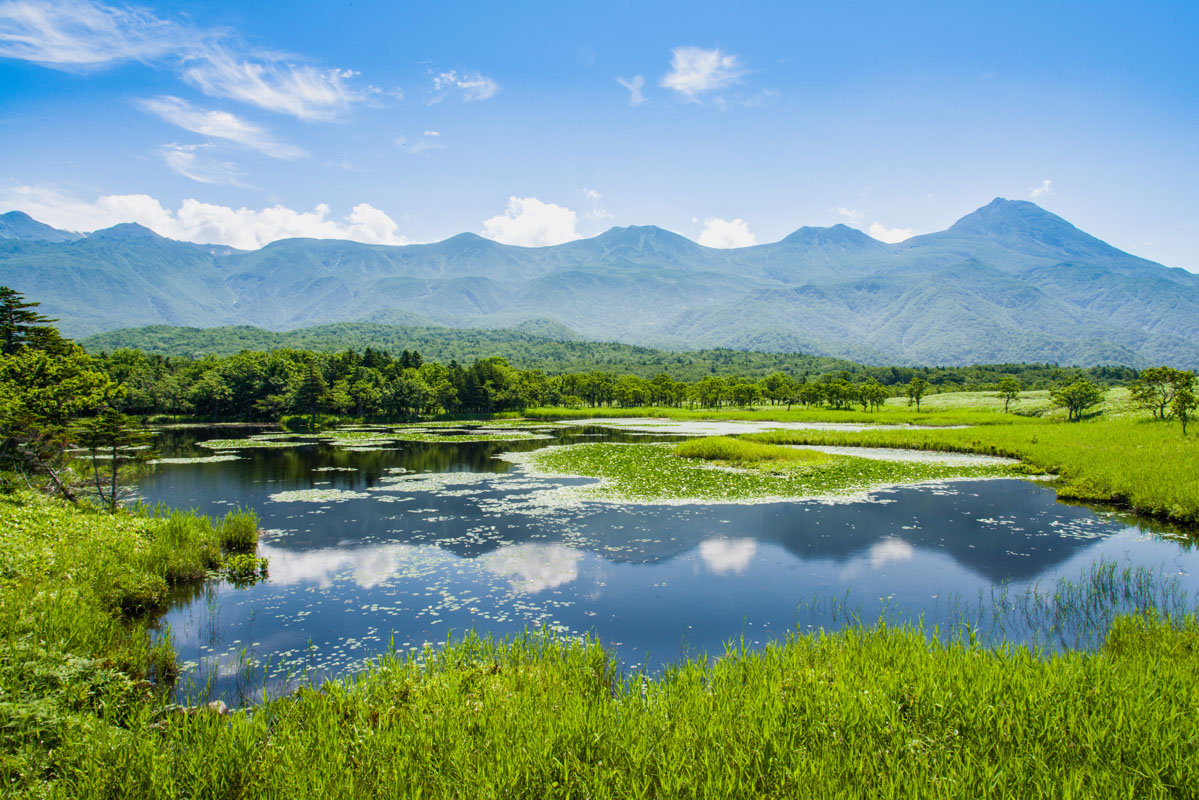
The Kitami Mountains share with the other Hokkaido ranges some common environmental features: the presence of lush flora, fauna endemic species such as bears that played a pivotal role in the Ainu traditions.
When hiking in Hokkaido, always remember to submit your itinerary to a local police station or directly to the Japan Police for your safety. You can file a form like this or use special service as shown here. In general, trails are not well-marked and most of these mountains are quite unexplored. Despite the moderate altitude, beginners should avoid these mountains. Instead, if they want to visit the region, they should choose any easy walk in one of the numerous Natural Parks and small green areas inside the major municipalities listed below.
Besides the main summit, the Teshio-dake massif features a number of minor summits like Mae-Teshio-dake (前天塩岳) and Nishi-Teshio-dake (西天塩岳).
Four different trails reach the mountaintop. You can choose to use one to ascent the peak and a different one to descend to the starting point. The old trail (旧道コース) runs along the Teshio River from the Teshio hut. It is joined halfway to the New Trail (新道コース). If you follow the old trail you will reach Mae-Teshio-dake first. At this point, you can choose to take the New Trail to complete the descent. Mind that if you need to come back to the Teshio hut you must take the junction to the old trail because the two trailheads end in a different place. If you choose this trail you will find another hut along the way. You can also use the old trail until the junction with the Rakudagan, a parallel trail that skips the stop at Mae-Teshio-dake and goes directly to the main peak.
On average, the route is 13km long, feasible in 6h. All the routes mentioned above do not include a stop at Nishi-Teshio-dake. In 1984, it was chosen by Kyūya Fukada to become one of the 100 Famous Japanese Mountains. It is also part of the Teshio-dake Prefectural Natural Park.
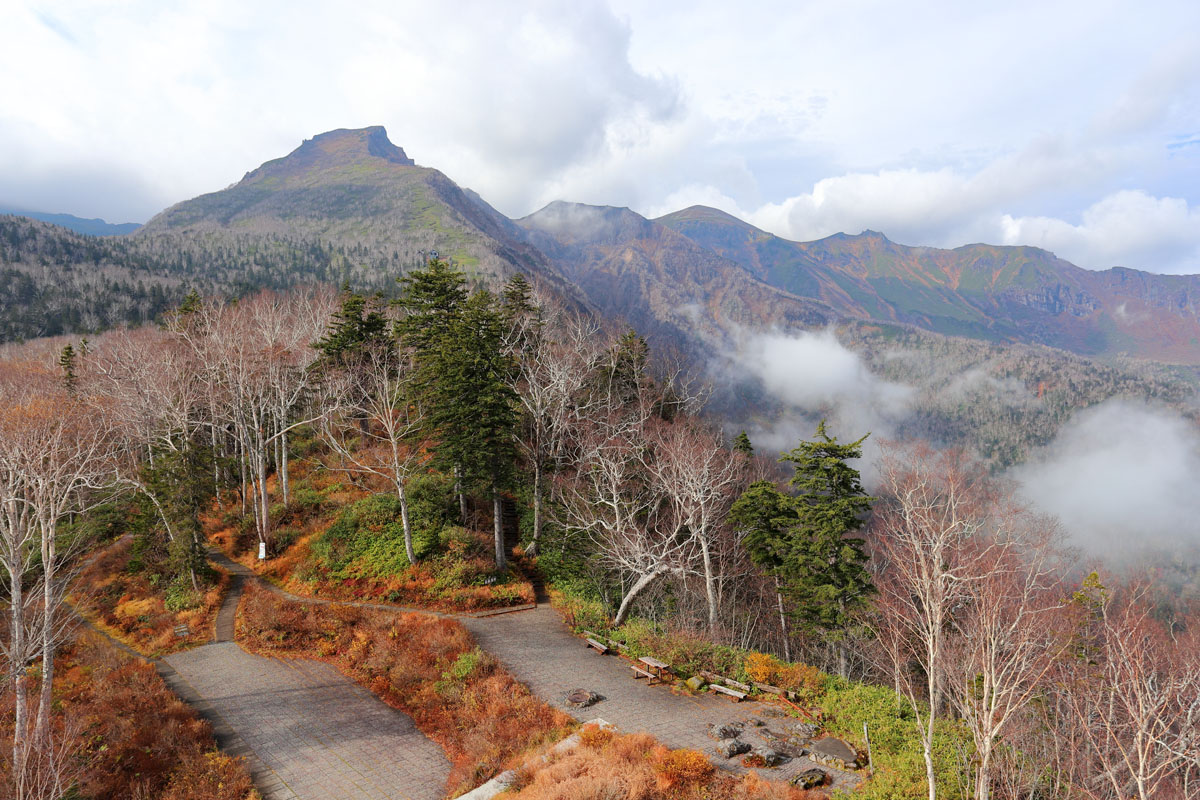
Hokkaido is a big peripheral area, wild and cold, a mixture of different traditions. You should chose Hokkaido as your destination because the it offers very unusual yet very worthy opportunities to explore Japan not from a very touristy side. For this reason, we suggest you should enjoy not only a standard hike but also a wide range of activities available in this area, such as horse trekking or fat bike experience. On Lake Abashiri (known for its prison as well) it is possible to try the smelt fishing on ice or practice bird watching, trying to spot the endemic Kingfishers. Lake Abashiri, together with Lake Notoro, Lake Saroma is a part of the famous Abashiri Quasi-National Park. If you are neither an adventurous nor an expert hiker, another option is to spend one day exploring the nature in Kitami city. A bike trail is laid out for 27km inside the city. It is feasible in about 2h starting from Kitami Station and stopping at some important places like the Kitami Memorial Museum, the Tenkei Temple, the Flower Paradise, a botanical garden. There are also several nice itineraries in the local parks in Kitami city and areas nearby. For example, there is a 5km trail inside the Okhotsk Forest extending between Kitami and Abashiri. Near the city, there is also the Kitami Wakamatsu Ski Resort equipped with 3 ski runs.
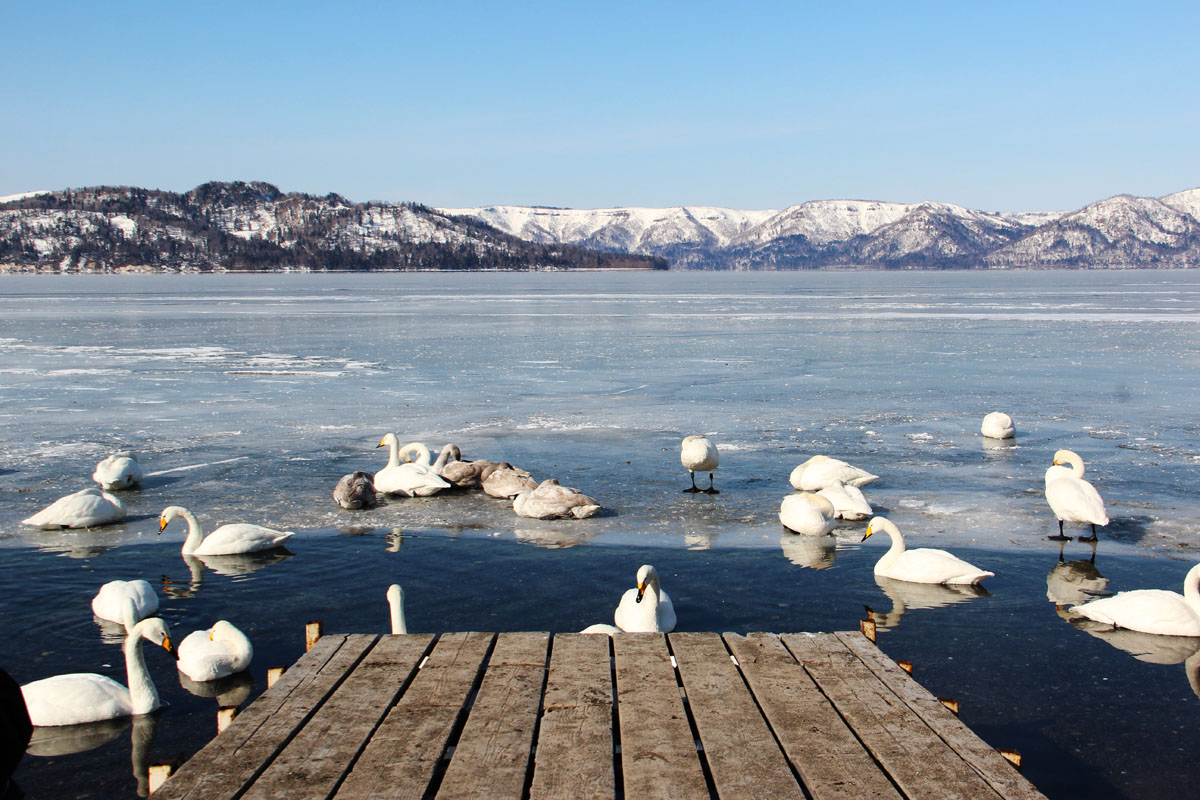
The Okhotsk area is well connected to Sapporo by buses and trains that reach all the major cities of the district. Visitors coming from the main island can book a flight from Haneda Airport to Memanbetsu Airport or Okhotsk Monbetsu Airport. Except for Sapporo, all the other municipalities, although fascinating, are far from being comparable to metropolitan areas like in Kanto and Kansai region. However, since reaching the Kitami range usually requires changing from a train to a bus and or a taxi, renting a car may be the most convenient option.
Explore Kitami Mountains with the PeakVisor 3D Map and identify its summits.


